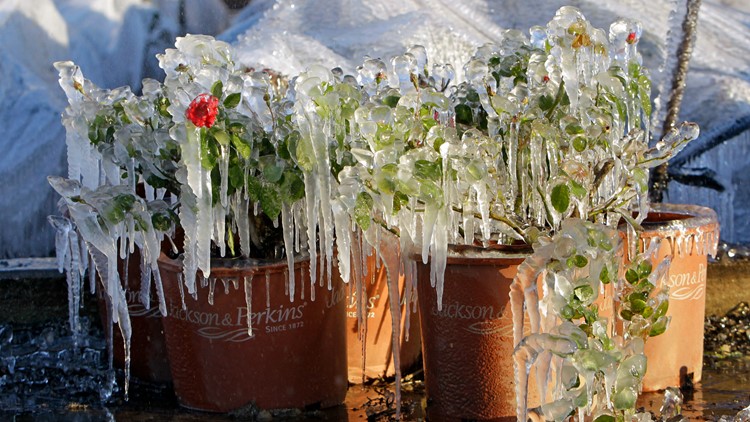ATLANTA — Those with fall gardens in North Georgia need to prepare for a dip down into freezing temperatures this Halloween night.
With the skies clearing out tonight, lows will drop into the 20s and 30s.
A Freeze Warning is in effect from 2 a.m. to 10 a.m. Wednesday. According to the Famers Almanac website, the best plan of action is to cover your plants. It said to cover them with a blanket or row cover.
Row covers, typically made of non-woven polyester, come in various weights and are sold in garden stores. Alternatives such as bed sheets, drop cloths, or medium-weight fabrics can also be used to protect vulnerable plants, but avoid using plastic. When using these covers, drape them loosely to ensure proper air circulation and prevent them from resting directly on the plants.
The almanac said to secure the covers to the ground using rocks, bricks, or stakes to keep them from touching the foliage below. Store sheets or row covers in a dry place, neatly rolled up and off the ground to avoid attracting vermin. If using polythene covers, hose them down if they become dirty and ensure they are dry and ready for use when frost threatens.
To provide adequate protection, it's advisable to have all covers in place well before sunset. In late afternoon or early evening, lightly water your plants before covering them. Apply the covers during the early evening when winds subside, and remove them the following day (mid-morning) to allow the plants to receive full exposure to warming sunlight.
RELATED: Forecast | Freeze Warning Tonight
Aside from covers, people can also create cold frames for their gardens. But ultimately, some plants need to be brought inside if possible.
"Another way gardeners look at frost resistance is to categorize from 'hardy' to 'tender,'" the Fatherms Almanac said. "Some plants ('hardy') tolerate some amount of short-term freezing, while other plants ('tender') are killed or injured by freezing temperatures."
Here's a guide to the different hardiness of plants.
No frost, light frost, hard frost?
According to the Famers Almanac website, these are some popular plants that can withstand some freezing temperatures and those that cannot.
>> Use its frost date calculator to see dates for your city
Hardy vegetables can withstand freezing temperatures and hard frosts for short periods without injury (Hard frost; below 28 degrees Fahrenheit):
- Broccoli
- Brussels sprouts
- Cabbage
- Collards
- Horseradish
- Kale
- Kohlrabi
- Mustard
- Greens Onion (sets and seeds)
- Parsley Peas
- Radish
- Rutabaga
- Spinach
- Turnips
Frost-tolerant vegetables (can withstand light frost; 28 to 32 degrees Fahrenheit):
- Beet
- Carrot
- Cauliflower
- Celery
- Chard
- Chinese cabbage
- Cabbage
- Endive
- Jerusalem artichoke
- Lettuce
- Onion
- Garlic
- Chives
- Parsnips
- Potatoes
- Rhubarb
Tender vegetables (withstands no frost)
The following vegetables are damaged by even light frost. They should be protected from frost or harvested before frost.
- Beans
- Cucumber
- Eggplant
- Muskmelon
- Okra
- Pepper
- Pumpkin
- Squash, summer
- Squash, winter
- Sweet corn
- Sweet potato
- Tomato
- Watermelon
The temperatures are already falling, so if you're reading this, find a blanket or pull those plants inside.



